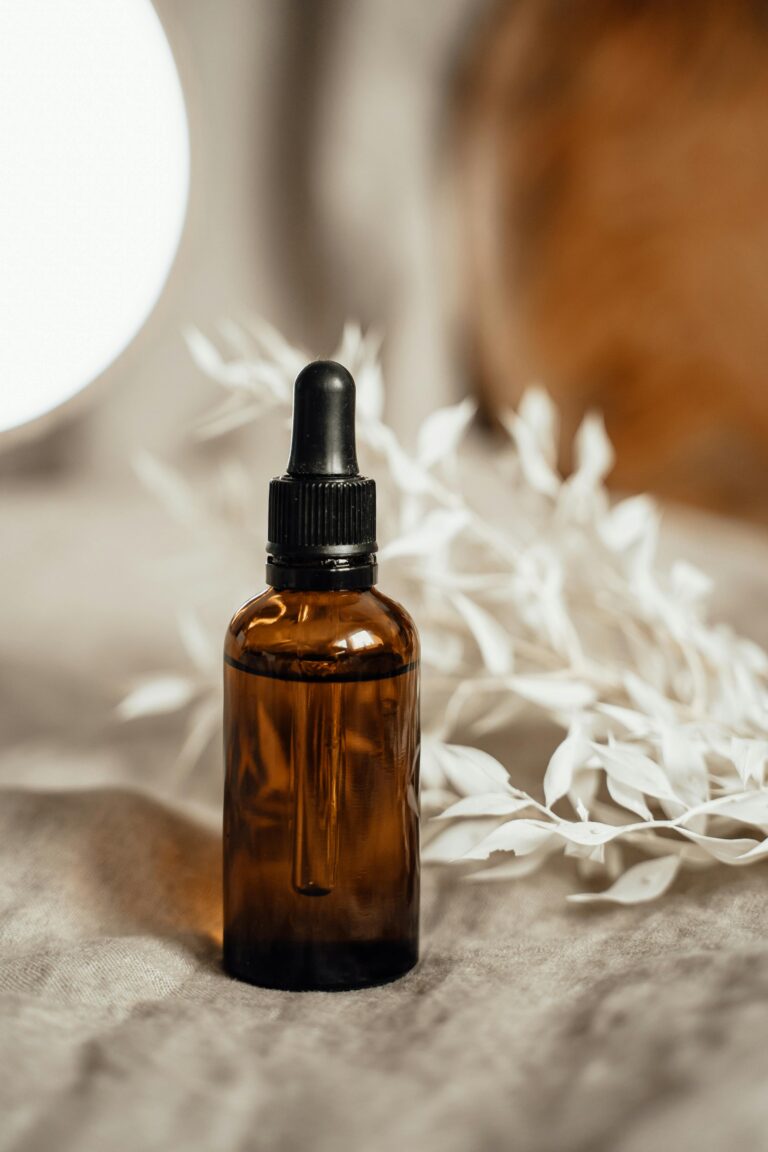Lactic Acid VS Glycolic Acid: Find the Best for Your Skin
If you’re on a quest for glowing skin, you’ve probably heard about lactic acid and glycolic acid. Both are powerful exfoliants that can transform your skincare routine, but they each have unique benefits that cater to different skin types and concerns. Understanding the differences between lactic acid vs glycolic acid can help you make informed choices for a radiant complexion.
Overview of Acids
Lactic acid and glycolic acid play crucial roles in skincare. Both belong to the alpha hydroxy acids (AHAs) family, known for their exfoliating properties. These acids can transform your skin, but they work differently, so it’s essential to understand how each one benefits your routine.
Lactic Acid
Lactic acid, derived from milk, offers gentle exfoliation. It hydrates the skin while removing dead cells, making it ideal for sensitive skin types. Lactic acid’s larger molecular size means it’s less aggressive, providing a subtler experience. This helps improve skin texture and can minimize the appearance of fine lines. Expect brighter, more luminous skin without the harsh side effects often associated with stronger acids.
Glycolic Acid
Glycolic acid comes from sugarcane and has the smallest molecular size among AHAs. This allows it to penetrate deeper into the skin, delivering more intense exfoliation. It’s particularly effective for tackling dark spots and uneven skin tone. Glycolic acid can promote cell turnover, revealing fresher skin underneath. But, while it’s potent, glycolic acid may cause irritation on sensitive skin, so consider starting with lower concentrations.
| Feature | Lactic Acid | Glycolic Acid |
|---|---|---|
| Source | Milk | Sugarcane |
| Molecular Size | Larger | Smaller |
| Exfoliation Level | Gentle | More Intense |
| Best For | Sensitive Skin | All Skin Types, Especially Oily or Acne-Prone |
| Hydration | Yes | No |
| Common Use | Moisturizers, Toners | Serums, Peels |
Understanding these details allows you to choose the right acid for your skin’s specific needs. Lactic acid may feel more soothing, while glycolic acid can deliver quicker results. Consider your skin’s sensitivity and concerns when incorporating these acids into your regimen. Making informed choices will lead to healthier, radiantly beautiful skin that showcases your unique glow.
Lactic Acid
Lactic acid is a standout in the world of skincare, especially for those craving smooth, hydrated skin. This powerhouse ingredient, derived from milk, works magic by gently exfoliating and delivering hydration. Whether you’re tackling texture issues or looking to boost your glow, lactic acid deserves a place in your routine.
Benefits of Lactic Acid
Lactic acid brings several skin-loving benefits to the table.
- Gentle Exfoliation: Lactic acid’s larger molecular size means it exfoliates more gradually than some other acids, making it perfect for sensitive skin. You’ll unveil a brighter complexion without the harsh irritation.
- Hydration Boost: This acid not only sloughs off dead skin cells but also helps your skin retain moisture. It attracts water to the skin, keeping it plump and hydrated.
- Texture Refinement: Regular use can smooth out irregularities in skin texture, helping diminish fine lines and making your skin feel softer and smoother.
- Radiant Glow: Lactic acid promotes cell turnover, which can lead to a healthier, radiant shine over time. Say goodbye to dullness and hello to youthful luminosity!
- Skin Barrier Support: By enhancing natural moisture levels, lactic acid supports the skin barrier, which is essential for overall skin health. A stronger barrier means better defense against environmental stressors.
Potential Side Effects
While lactic acid offers incredible benefits, it’s essential to be aware of potential side effects.
- Mild Irritation: Some users might experience mild redness or tingling upon first use. It’s a good idea to start with a lower concentration to gauge your skin’s response.
- Sun Sensitivity: Like other AHAs, lactic acid can make your skin more sensitive to the sun. Always apply sunscreen during the day to protect your freshly exfoliated skin from UV damage.
- Allergic Reactions: Although rare, some individuals might have allergies to lactic acid. If you notice any swelling or severe irritation, discontinue use and consult a dermatologist.
Glycolic Acid
Glycolic acid, a powerhouse in the skincare world, comes from sugarcane and is celebrated for its remarkable exfoliating properties. Its smaller molecular size makes it exceptionally effective, allowing for deeper penetration into your skin. This translates into brighter, smoother skin and keeps those pesky dark spots at bay.
Benefits of Glycolic Acid
- Intense Exfoliation: Glycolic acid sloughs away dead skin cells, revealing fresh, glowing skin underneath. This exfoliation process helps diminish the appearance of fine lines and wrinkles, giving you that youthful radiance.
- Improves Skin Tone: Regular use of glycolic acid reduces hyperpigmentation, improving uneven skin tone. If you’re dealing with dark spots from acne scars or sun damage, glycolic acid can be a game-changer.
- Boosts Collagen Production: This acid encourages collagen synthesis in the skin, enhancing elasticity and firmness. More collagen means plumper, healthier skin over time.
- Preps for Better Product Absorption: By clearing away the dead layer, glycolic acid allows other skincare products—like serums and moisturizers—to penetrate deeper and work more effectively.
- Helps with Acne: If you struggle with breakouts, glycolic acid can help keep pores clear by preventing dead skin cells from clogging them. This can lead to fewer and less severe breakouts.
Potential Side Effects
While glycolic acid presents many benefits, it’s essential to approach it with care. Some users may experience:
- Irritation: Sensitive skin can react negatively. Look for lower concentrations (around 5%-10%) if you’re just starting out. Always patch test before full application.
- Sun Sensitivity: Glycolic acid can increase your skin’s sensitivity to the sun. Using it during the day requires diligent sunscreen application.
- Dryness: Overuse may lead to dryness or peeling. Moderation is key—start slow and gradually increase frequency based on your skin’s response.
- Redness: Some individuals might notice redness after application. If this occurs consistently, consider reducing frequency or concentration.
Understanding these aspects of glycolic acid can empower you to make informed choices tailored to your unique skincare needs. Whether you’re looking to brighten your complexion or tackle pesky dark spots, glycolic acid’s distinctive properties can be your skin’s best friend.
Lactic Acid vs Glycolic Acid
When it comes to giving your skin that radiant, fresh look, understanding the differences between lactic acid and glycolic acid can make all the difference. Both belong to the alpha hydroxy acids (AHAs) family but offer unique benefits to suit various skin types and concerns.
Key Differences
Lactic acid shines in its gentle approach, making it perfect for sensitive skin. Derived from milk, it has a larger molecular size, so it exfoliates without being harsh. You get benefits such as:
- Gentle Exfoliation: Ideal for those who want to buff away dead skin cells without irritation.
- Hydration Boost: It attracts moisture, keeping your skin feeling soft and supple.
- Texture Refinement: Say goodbye to rough patches and uneven skin texture.
On the flip side, glycolic acid, extracted from sugarcane, packs a punch with its smaller molecular size, allowing for deeper and more intense exfoliation. You’ll notice benefits like:
- Intense Exfoliation: It reveals a brighter, smoother complexion by sloughing off more dead skin cells.
- Improvement of Uneven Skin Tone: This acid works wonders on dark spots and hyperpigmentation, promoting an even skin tone.
- Boosting Collagen Production: With continued use, it helps improve skin elasticity, making your skin feel firmer.
While lactic acid suits those with sensitive skin, glycolic acid is perfect for those tackling larger imperfections and looking for more noticeable results.
Similarities
Even though their differences, lactic and glycolic acids share many qualities. Both acids effectively exfoliate and improve your skin’s overall appearance. They:
- Promote Radiance: Both acids help in creating that coveted glow by removing dead skin cells.
- Support Skincare Product Absorption: They enhance the effectiveness of serums and moisturizers, ensuring your skin reaps all the benefits.
- Encourage Skin Renewal: Regular use of either acid can speed up cell turnover, leading to fresher, rejuvenated skin.
Choosing between these two great options really depends on your skin type and the results you’re looking for. Understanding how lactic acid and glycolic acid differ can guide you towards making the right choice for your skin’s unique needs.
Conclusion
Choosing between lactic acid and glycolic acid boils down to your skin type and specific concerns. If you have sensitive skin and want gentle hydration lactic acid is your best bet. It offers a soothing touch while refining texture.
On the other hand if you’re aiming for more dramatic results glycolic acid delivers intense exfoliation and can tackle stubborn issues like uneven tone and acne. Both acids can elevate your skincare routine and promote that coveted glow.
By understanding their unique benefits you can confidently select the acid that aligns with your skincare goals for healthier and more radiant skin.





